Need the quick rundown on Boracay weather before heading to its world-famous beaches? Anticipate sun-filled days or plan around the rainy months with our straightforward guide. You’ll find up-to-date seasonal climate details, essential for scheduling your island activities and making the most of your Boracay visit.
BORACAY ISLAND WEATHER: WHEN TO PLAN YOUR VISIT
Boracay has two main seasons, the dry Amihan season from November to May with moderate temperatures and minimal rainfall ideal for tourists, and the Habagat season from June to October marked by hot, humid weather and frequent rain.
The best time for beach activities and to maximize sunshine in Boracay is during the peak tourist season from February to May, especially March to May which are the sunniest months with up to 8 hours of daily sunshine.
Despite being a tropical paradise with ideal conditions for beach activities and water sports year-round, visitors should monitor weather forecasts to avoid the rainy season from June to November, which may include typhoons and heavy rainfall.
Boracay Weather Forecast
Boracay is considered to have tropical weather all year round, with two main seasons. A year is divided into these two seasons, we call it Amihan and Habagat. To give you a better picture of what the weather is like, I have also included graphs for you to look over below.
Table of Contents
Understanding Boracay's Climate
Boracay Island, nestled in the Philippines, is celebrated for its stunning landscapes and tropical climate, shaped by two distinct seasons.
Across the Philippines, the weather follows two primary seasonal patterns: Amihan and Habagat. Boracay Island, in particular, experiences these contrasting seasons distinctly, offering visitors a variety of memorable experiences.
From November to May, the Amihan season prevails, bringing mild temperatures, minimal rainfall, and refreshing northeast winds. During this period, Boracay enjoys clear skies and a delightful climate, making it a highly popular destination for tourists.
In contrast, from June to October, Boracay transitions into the Habagat season, marked by hot and humid climate, frequent rainfall, and strong winds from the west. Despite the differences from Amihan, the Habagat season reveals a different side of Boracay’s beauty, highlighting the island’s adaptability and diverse charm.
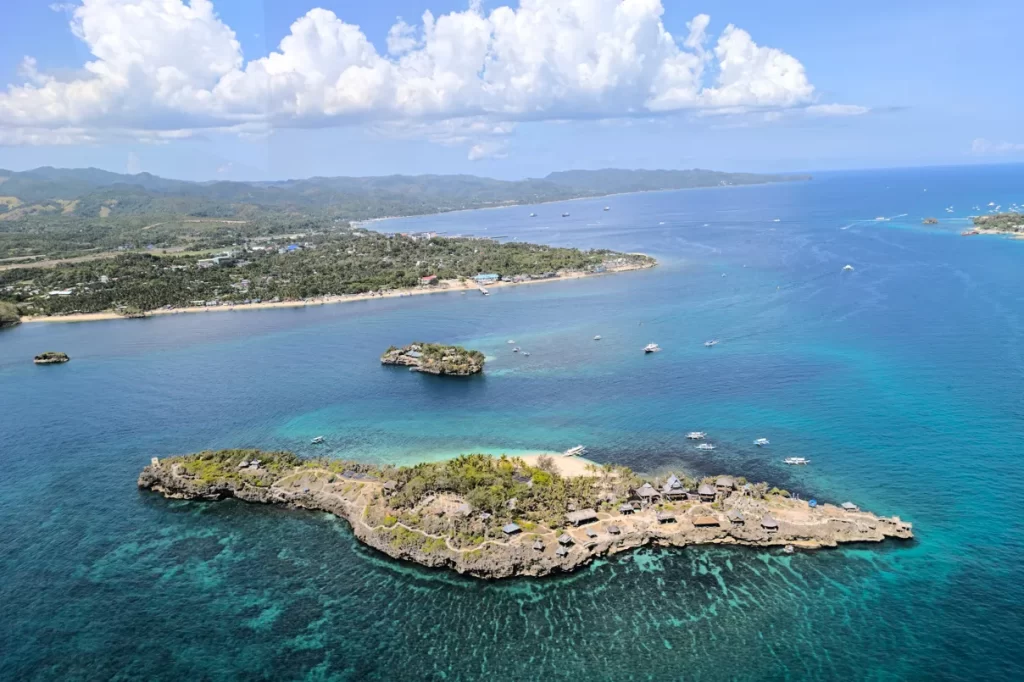
Amihan Season: Cool Breezes and Dry Skies
In the Philippines, the Amihan season, stretching from November to May, is cherished by locals and tourists alike. This season, dominated by cool and dry northeast monsoon winds, offers a refreshing climate that makes every sunny day on Boracay Island comfortable and enjoyable.
During Amihan, Boracay Island enjoys its peak tourist season with mostly dry weather and occasional rain showers. The northeast winds create ideal conditions for water sports such as kiteboarding and windsurfing. Whether you’re a laid-back beachgoer or an adventure seeker, the Amihan season in Boracay has something special for everyone.
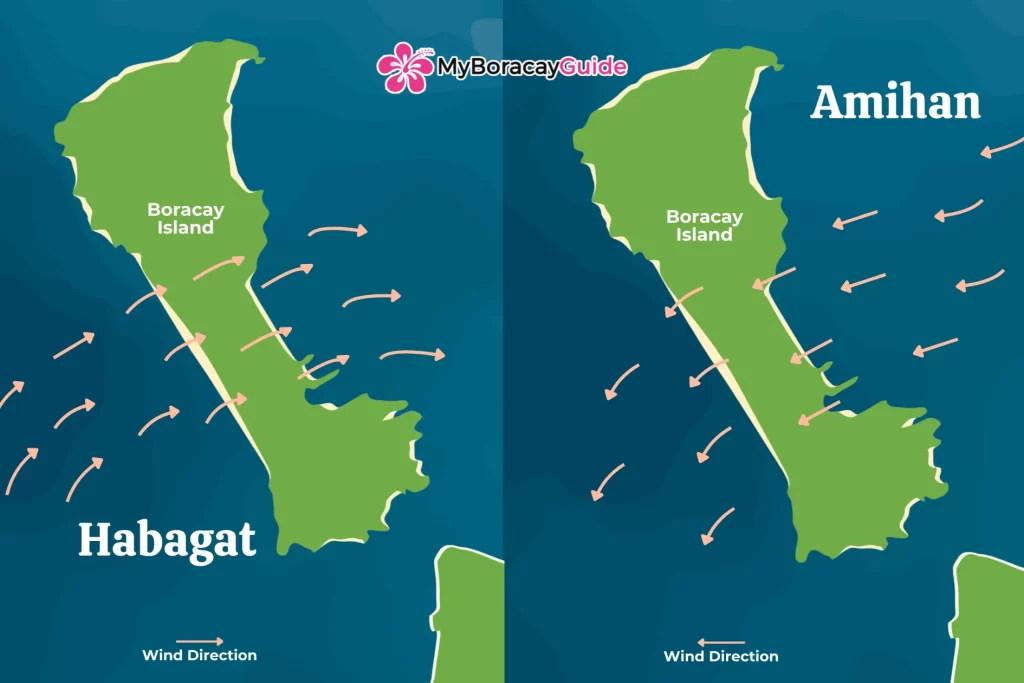
Habagat Season: Rain and Warmth
As the Amihan season ends, Boracay Island enters its rainy season, known as the Habagat season, from June to October. This period is characterized by warm and wet southwest monsoon winds that bring heavy rains, thunderstorms, and high temperatures. During the Habagat season, the island experiences significant precipitation, with average rainfall reaching up to 300 mm, highlighting the intensity of this rainy period.
The Habagat season features a unique weather pattern with alternating periods of intense rain showers and clear skies, extending Boracay’s wet season into November. While the rain may deter sunbathers seeking uninterrupted sunshine, it also reveals a distinctive perspective of Boracay, showcasing its beauty in a different light.
Typhoon Season and Its Impact on Boracay Island Hopping
Typhoon season in Boracay runs from June to November, often bringing severe weather and potential disruptions. Recent typhoons, such as Typhoon Ursula in December 2019 and Typhoon Egay in July 2023, caused significant damage, including flooding, power outages, uprooted trees, and damaged infrastructure, leading to temporary suspension of tourist activities.
To stay safe during a typhoon, keep updated with weather forecasts and advisories. Ensure your accommodations are secure and stocked with essentials. Avoid outdoor activities and seek shelter in designated safe areas. If you find yourself on the island during a typhoon, enjoy indoor amenities such as hotel spas, restaurants, and entertainment facilities. Flexibility in travel plans and prioritizing safety will ensure a more enjoyable and secure experience on Boracay.
Seasonal Ports Utilized in Boracay
In Boracay, the ports utilized for transportation vary depending on the prevailing seasonal winds—Amihan and Habagat. During the Amihan season, which typically runs from late October to May, the northeast winds favor the use of the Caticlan Jetty port and Cagban Port on the southern side of the island. This port becomes the primary entry and exit point due to its sheltered position from the northeast winds, ensuring smoother sea conditions for ferries and boats.
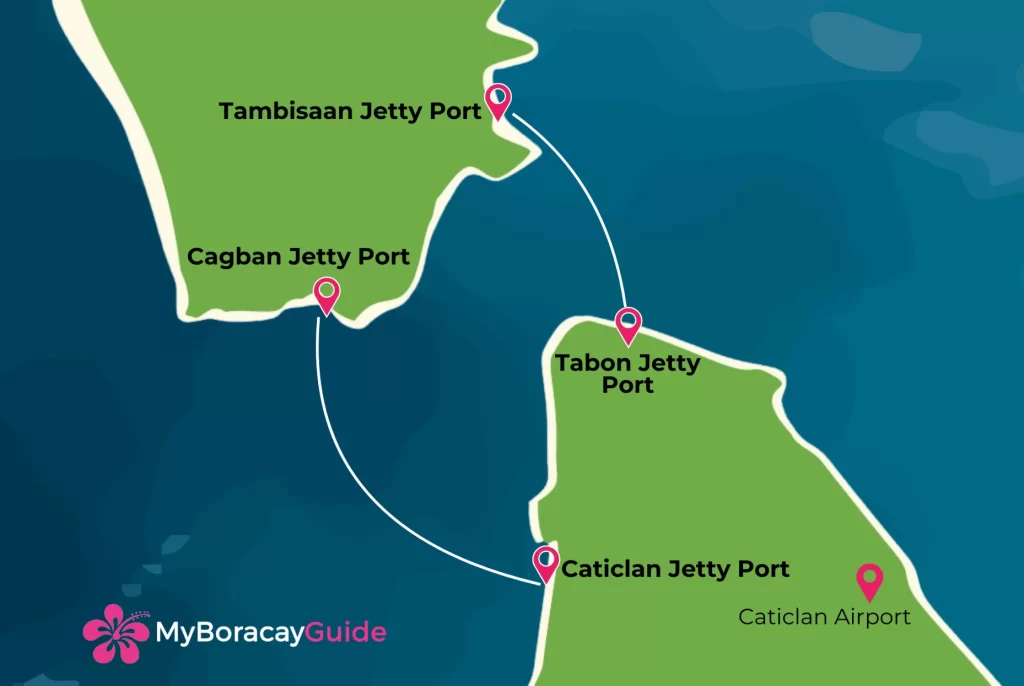
Conversely, during the Habagat season, from June to late October, when the southwest winds dominate, operations shift to the Tabon Port and Tambisaan Port on the opposite side of the island. This switch helps protect boats and passengers from the rougher seas caused by the Habagat winds, providing safer and more comfortable travel conditions. This strategic use of different ports helps maintain consistent and reliable access to Boracay regardless of the seasonal changes in wind and weather conditions.
Weather across the Philippines
As an archipelago of over 7,000 islands, the Philippines displays varied climatic patterns across its regions due to its diverse topography, latitude, and surrounding water bodies. In Luzon, northern areas are cooler because of mountainous terrain and have a tropical monsoon climate with distinct wet and dry seasons. Central Luzon, including Metro Manila, features a tropical savanna climate with a dry season from November to May and a wet season from June to October. Southern Luzon has a tropical rainforest-like climate, with high humidity and consistent rainfall year-round.
In the Visayas, the region generally experiences moderate rainfall throughout the year. Eastern parts like Leyte and Samar receive more rain due to Pacific typhoons, while Cebu and neighboring islands experience less precipitation in the dry season. Mindanao’s climate is more varied, with coastal areas having a tropical rainforest climate and interior regions resembling a tropical savanna. The southwestern region, such as Zamboanga, is drier, while the northeastern areas like Surigao receive heavier rains due to their proximity to the Pacific Ocean.
Given these variations, it’s essential to check the regional patterns before planning a trip to find the best time for your desired activities. Whether it’s exploring Boracay’s pristine beaches, hiking in Northern Luzon, or diving in the Visayas, understanding the local climate ensures you’ll make the most of your visit.
Boracay Weather by Month
Boracay’s weather is a symphony of temperatures, rainfall, and sunshine, each playing their parts in harmony. A good grasp of this symphony is key to planning an efficient visit. Let’s delve into a monthly overview of Boracay’s weather.
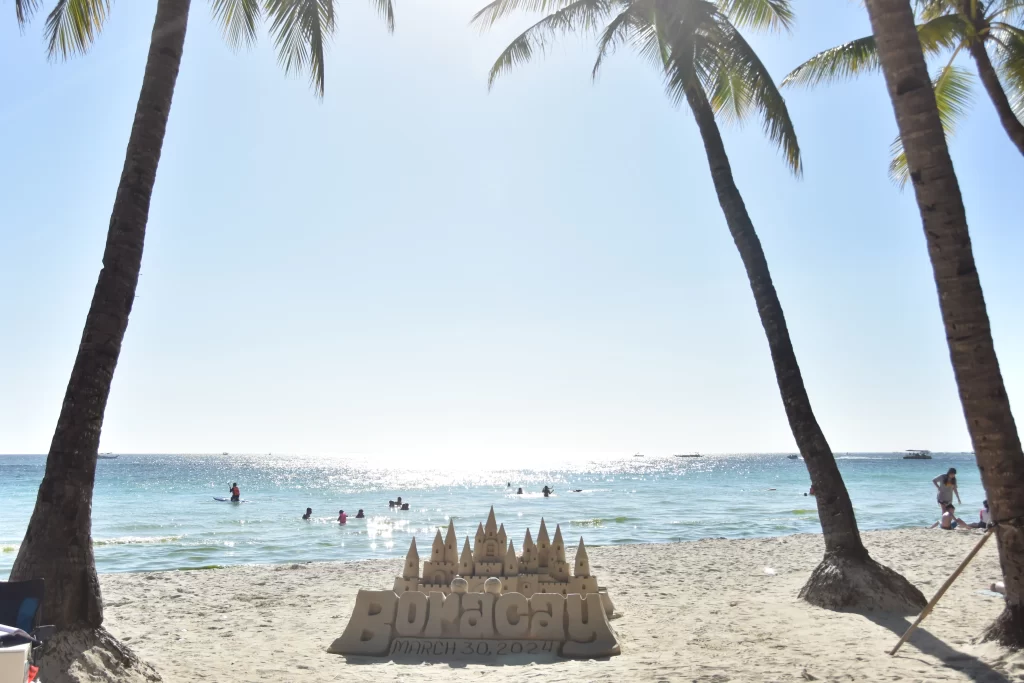
The average temperatures in Boracay throughout the year are as follows:
January:☀️ 26°C
February:⛅ 27°C
March:☀️28°C
April: ⛅ 29°C
May: ☁️ 29°C
June: ⛈️ 28°C
July: 🌧️ 28°C
August: ☁️ 28°C
September: 🌧️ 28°C
October: ☁️ 28°C
November: ⛅ 27°C
December: ⛅ 26°C
These temperatures provide a warm and tropical climate for visitors to enjoy.
Temperature fluctuations and varying rainfall patterns significantly influence Boracay’s climate throughout the year. Yet, it’s not just temperatures and precipitation that shape the island’s conditions; the amount of sunshine is equally important. For the most accurate updates, using platforms like Windy.com can provide real-time data on these factors, helping you effectively plan your visit to Boracay with the most detailed and current information.
Sun-Kissed Days and Starry Nights
Boracay Island, a sun-seekers haven in the Philippines, typically enjoys 6 to 8 hours of sunshine daily. March, April, and May are the sunniest months, offering clear skies and up to 9 hours of sunlight per day. During this time, beachgoers can bask in the sun well into the evening, as twilight stretches into extended night hours with pleasant temperatures.
Even during other months, Boracay maintains its sunny reputation. January, October, November, August, and September average about 7 hours of sunshine per day, while February offers around 8 hours. Despite fluctuating weather conditions, the nights generally remain warm and balmy. Visitors can relish the laid-back atmosphere at night, often under star-filled skies that complement Boracay’s vibrant beach scene.
Precipitation Patterns: From Showers to Downpours
While Boracay basks in the glory of its sunny days, it also experiences its share of rainfall. Rainfall varies throughout each period of the year, with the wettest month being June, boasting an average rainfall of 429mm.
Grasping these rainfall patterns can enhance your trip planning, ensuring readiness for both sunny days and the chance of tropical downpours or a thunderstorm.
Daily Life under the Boracay Sun
Living under the sun on Boracay Island in the Philippines brings tranquility, thrill, and pure joy. With an average temperature of around 30°C during the dry season, each day offers ideal conditions for a variety of beach activities. Whether you’re building sandcastles, playing beach volleyball, or soaking up the sun, the warm climate ensures every moment is enjoyable.
But Boracay’s charm isn’t limited to sunny days. Even in the wet season, you can still find adventure. From ATV tours through the island’s lush forests to indoor shopping and spa visits, there’s no shortage of excitement. Check out these activities to ensure your Boracay experience remains vibrant regardless of the weather.
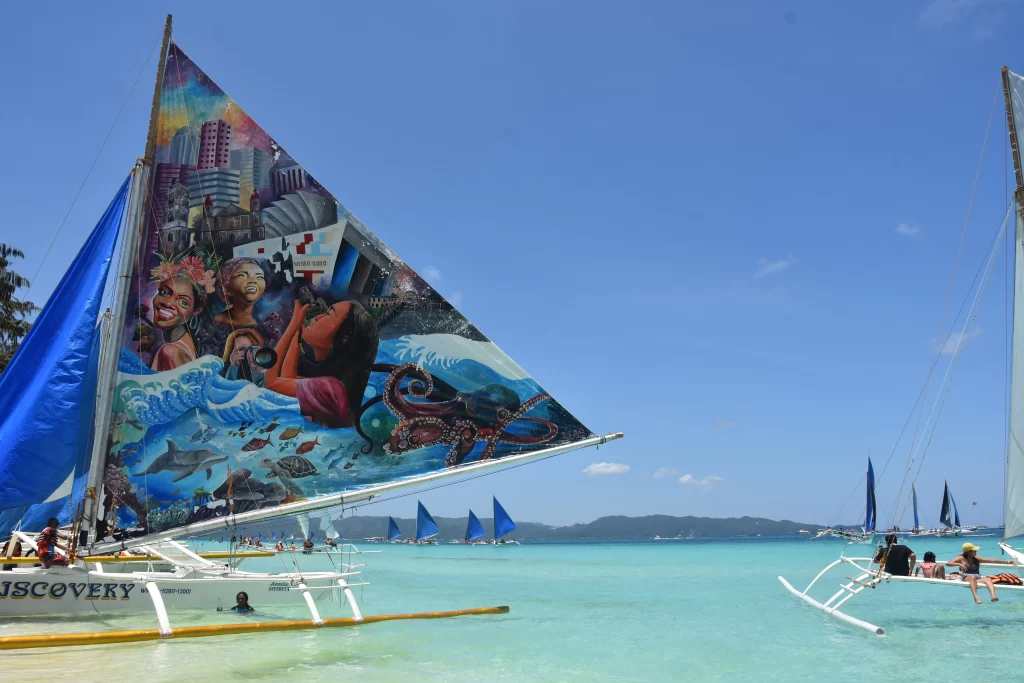
Sea Temperatures Year-Round: Always Inviting
In Boracay Island, Philippines, the sea temperatures remain inviting throughout the year, drawing swimmers and water sports enthusiasts alike. The annual average water temperature is a pleasant 28.8°C, making it suitable for a refreshing swim at any time of the day or night.
Even during February, the island’s typically coolest month, the sea temperatures hover around 26.0°C. By contrast, in May, which is generally the warmest month, temperatures can rise to a balmy 31.0°C. This makes Boracay ideal for divers and casual swimmers alike, no matter the season. Whether day or night, visitors can count on consistently warm and inviting waters to enjoy during their tropical getaway.
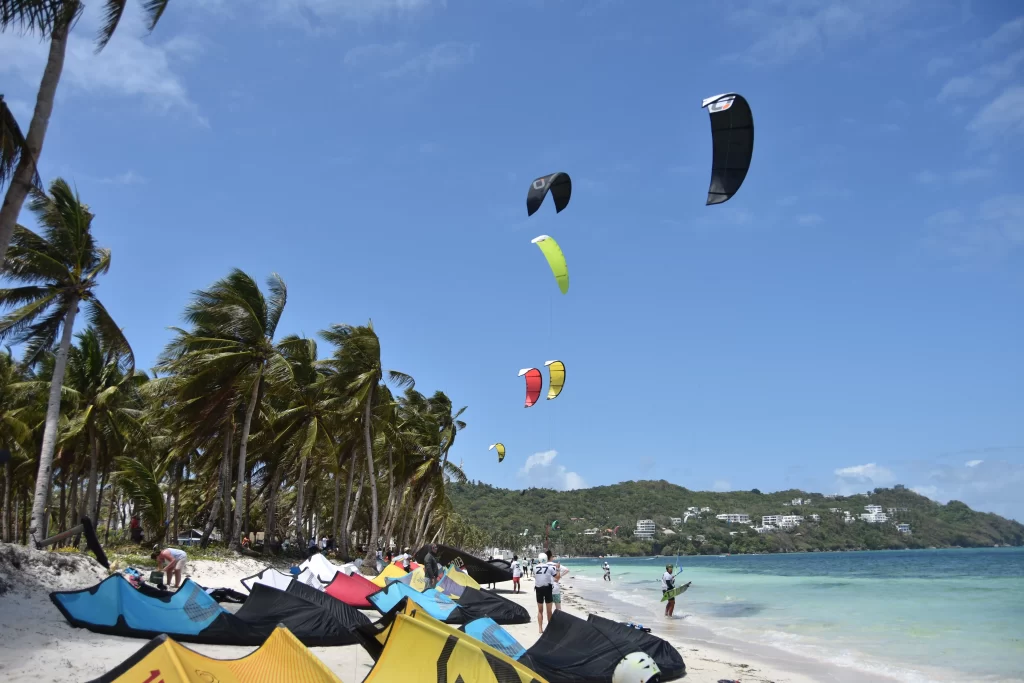
Winds of Boracay: Sailing and Water Sports Conditions
Boracay Island isn’t just about swimming; it’s a playground for water sports enthusiasts. The island’s wind conditions significantly shape the water sports scene, so it’s essential to check wind speeds and directions at various times of the day to find the best spots. The conditions, influenced by prevailing winds, make Boracay a hotspot for activities like:
Sailing
Kiteboarding
Windsurfing
Parasailing
Jet skiing
Stand-up paddleboarding
Bulabog Beach, in particular, offers ideal conditions for windsurfing and kiteboarding, even during the rainy season. With mild weather and a safe environment, it’s the perfect spot for water sports lovers seeking an unparalleled adrenaline rush.
When is the Best Time to Visit Boracay
As Philippines is composed of island country, Your decision on when to visit Boracay will largely hinge on your preferred weather conditions. If you’re looking for ideal weather, the high season from November to May is your best bet. This period coincides with the Amihan season, offering moderate temperatures, minimal rainfall, and northeast winds.
However, if you’re a sun-chaser, the dry season from late February to mid-June is your time. This period offers extended daylight hours, and from March to May, you can enjoy the sunniest beach weather in Boracay. So, whether you’re a sunbather, a water sports enthusiast, or a beach bum, Boracay has the perfect weather waiting for you.
Peak Sunshine Periods: Maximizing Your Beach Time in Boracay
When planning your trip to Boracay during the peak sunshine months from February to May, you can expect to experience the best of the island’s tropical climate. These months boast the longest days filled with sunlight, making them ideal for a variety of beach activities. Particularly from March to May, Boracay enjoys its sunniest days, with April providing about 9 hours of daily sunshine. Packing sunscreen and beach hats is essential to fully savor the warm, sunny weather.
Why Hot Season is Boracay's Peak Season:
From December to May, Boracay Island enters its peak tourism season due to optimal weather conditions characterized by sunny days and minimal rainfall. This period coincides with major holidays such as Christmas, New Year’s, and Holy Week, infusing Boracay with a festive atmosphere replete with events and celebrations.
Water Sports: The calm and clear waters during these months create perfect conditions for water sports. Bulabog Beach, in particular, has become a prime spot for windsurfing and kiteboarding, attracting enthusiasts ranging from beginners to seasoned professionals.
Tourist Turnout: The consistently pleasant weather results in a high number of visitors, which supports local businesses and boosts the economy through vibrant tourism.
Nightlife: As the sun sets, Boracay transforms into a bustling hub of nightlife. The island is alive with bars, clubs, and beach parties, featuring live music and DJs that keep the party going until the early hours.
Understanding the dynamics of Boracay’s sunny seasons can help travelers plan their visits to maximize their enjoyment, whether they are looking to relax under the sun, partake in thrilling activities, or immerse themselves in the local culture and nightlife.
Avoiding the Wet Season: Planning Around the Rain on Boracay Island
Boracay’s sun-drenched appeal is well-known, but the Habagat season from June to November introduces strong winds and heavy rainfall, with peak precipitation in June and October. It’s crucial for visitors to monitor weather forecasts during this time. Despite the heavier rains, this season also transforms Boracay into a lush, vibrant paradise, offering a different kind of scenic beauty.
Embracing the Low Season: Boracay Island's Unexpected Perks
From June to October, Boracay’s low season brings the Habagat monsoon’s strong winds and regular showers. While less ideal for some, this season offers unique opportunities for those seeking tranquility:
Lower Costs: Reduced tourist numbers lead to lower hotel rates and local discounts on activities and dining, ideal for budget-conscious travelers.
Fewer Crowds: The beaches are less crowded, providing a peaceful atmosphere perfect for relaxing or enjoying quiet evenings.
Lush Landscapes: The regular showers enhance the island’s greenery, making this times a photographer’s and nature lover’s dream.
Unique Activities: The island remains vibrant with cultural explorations, spa days, and culinary adventures. Strong winds also make it great for kiteboarding and windsurfing.
Special Events and Promotions: Quieter months prompt hotels and tour operators to offer special events and promotions, including themed nights and cultural shows.
Visiting Boracay during the low season allows for a distinct and memorable experience, filled with advantages for those who plan wisely and are flexible with their itinerary. This period lets you enjoy the island’s charm without the usual crowds.
Boracay Wind: Navigating Boracay Island's Tropical Conditions
For a seamless day on Boracay Island, it’s essential to check the forecast and dress appropriately for its tropical climate. In warm weather, lightweight, water-absorbent fabrics like cotton, linen, and Dri-Fit offer comfort. During the wet season, fabrics such as polycotton, chiffon, or rayon, which dry quickly and don’t cling to the skin, are recommended. Bringing along a light raincoat or waterproof poncho is helpful for unexpected showers.
To simplify laundry while traveling, pack wrinkle-free or non-iron garments, use a laundry bag or sink, and consider nearby laundromats.
Check Before You Go: Stay Informed
To make the most of your Boracay adventure, keep an eye on the weather forecast. This allows you to plan your day according to the island’s ever-changing tropical conditions.
Rainy Day Activities in Boracay Island: Find Shelter from the Storm
Even on rainy days, Boracay Island ensures your holiday remains enjoyable. Indulge in spa treatments or full-body massages to rejuvenate indoors, or explore activities like the Mainland Adventure or a Land Tour, designed to offer fun regardless of the Boracay weather. Rain or shine, Boracay always has something exciting to offer!
Boracay offers diverse adventures tailored to enhance your experience. Start with the ATV Mainland Adventure, a 2 to 3-hour journey including hotel pickup and a series of thrilling activities like ATV rides, cliff diving, and river kayaking. You’ll also enjoy unique experiences like a Kawa Hot Bath and Monkey Zipline, all accompanied by a friendly local guide.
For a more thrilling challenge, try the Zipline Adventure, lasting 2-3 hours. It features an extra slippery zipline that doubles the excitement, especially during rainy conditions. This adventure also includes tubing, a relaxing Kawa Hot Bath, and hotel pickup.
For a slower pace, choose the Land Tour via E-trike. This guided tour takes you through Boracay’s scenic spots such as Bolabog, Keyhole, and Puka Beach, and concludes with a soothing full-body massage, perfect for a rainy day.
Each of these tours is designed to provide an unforgettable experience in Boracay, offering a variety of options whether you seek adventure or relaxation. For more information, visit MyBoracayGuide Adventures.
Booking Transportation with MyBoracayGuide
Navigating Boracay Island’s tropical climate becomes smoother when you have reliable transportation. MyBoracayGuide makes booking a ride around the island hassle-free, letting you focus on enjoying your day to the fullest. They offer airport transfers, van rentals, and private boat charters, ensuring you’re well-prepared for Boracay’s diverse weather conditions.
During warm and sunny days, MyBoracayGuide will swiftly get you from one sun-soaked destination to the next so you can fully enjoy the island’s famous beaches. When rain is in the forecast, their reliable and covered transportation will keep you dry and comfortable as you travel to Boracay.
Check the forecast, book transportation ahead of time, and stay prepared to explore Boracay’s many treasures, whether you’re basking in the sun or finding shelter from a tropical storm. MyBoracayGuide ensures your ride is as seamless as your adventure!
Sunrise and Sunset: Boracay's Daily Spectacle
The spectacular sunrises and sunsets of Boracay provide a daily visual feast, lending a magical touch to the island experience. Boracay witnesses breathtaking sunrises and sunsets that vary in time across the year, painting the sky in hues of orange, pink, and red, providing a picturesque backdrop for your holiday memories.
Sunrise times on the island generally fall between 5:30 AM at the earliest in May and around 6:00 AM at the latest in January. On the other hand, sunset times typically range from about 5:30 PM in December to 6:30 PM in June. Whether you’re an early bird or a sunset chaser, Boracay’s daily spectacle of sunrise and sunset is a sight you wouldn’t want to miss.
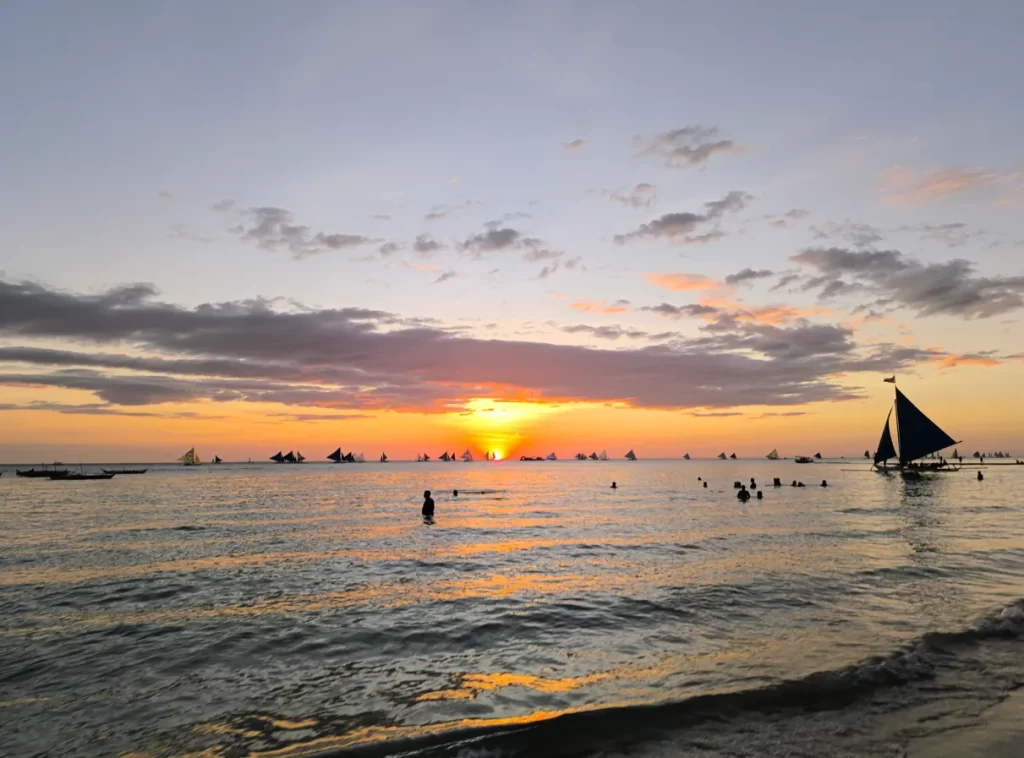
Boracay Weather Wrap-Up
From the refreshing breezes of the Amihan season to the warm rains of the Habagat season, Boracay’s weather is as varied as the island itself. Understanding these patterns gives you the best chance to plan a visit that makes the most of what Boracay offers. Whether you’re a sun-chaser, a water sports enthusiast, or simply love the tropical climate, Boracay’s weather creates a vibrant backdrop for memorable experiences.
As you prepare for your trip to Boracay, remember to check the forecast, pack accordingly, and embrace the island’s tropical conditions. Each day in Boracay is an opportunity for adventure, rain or shine!
Boracay is a beautiful destination that can be enjoyed at any time of the year. I am writing this message in the middle of May, and it’s a good day to enjoy the beach. Though it was drizzling at dawn, the trees now look greener, and the sun is shining brightly against a cloudless blue sky. I hope this information helps you decide on the best time to visit the island.
Frequently Asked Questions (FAQs)
The best month to visit Boracay depends on your preference for weather. March to May offers sunniest weather, while August to December has slightly cooler temperatures. Consider your weather preference before booking your trip.
The rainy season in Boracay typically runs from June to October, during which the island experiences the southwest monsoon or Habagat.
The ideal time to visit Boracay is during the dry season from December to May, offering sunny weather and minimal rain. April and May are especially popular but can be crowded. For a quieter experience, consider visiting in May, as it marks the end of the peak season.
The driest month in Boracay is typically March through May, making it the best time to experience warm, sunny beach weather.
Boracay Island has a tropical climate with an average year-round temperature of 30°C and 75% humidity, making it a pleasant place to stay at almost any time. The best time to visit Boracay is during the high season for warm and dry weather.
The average temperature in Boracay typically ranges around 27°C to 28°C (around 80°F to 82°F). This tropical climate makes Boracay a great destination for beach activities year-round.
Boracay weather has two main seasons: the Amihan season from November to May, and the Habagat season from June to October. These are the predominant weather patterns on the island.
The average sea temperature in Boracay is 28.8°C, ideal for swimming throughout the year.
The best weather in Boracay is usually from December to May when it’s the dry season with less rainfall and clear skies. The less crowded months tend to be in May and November, just before and after the peak tourist seasons.


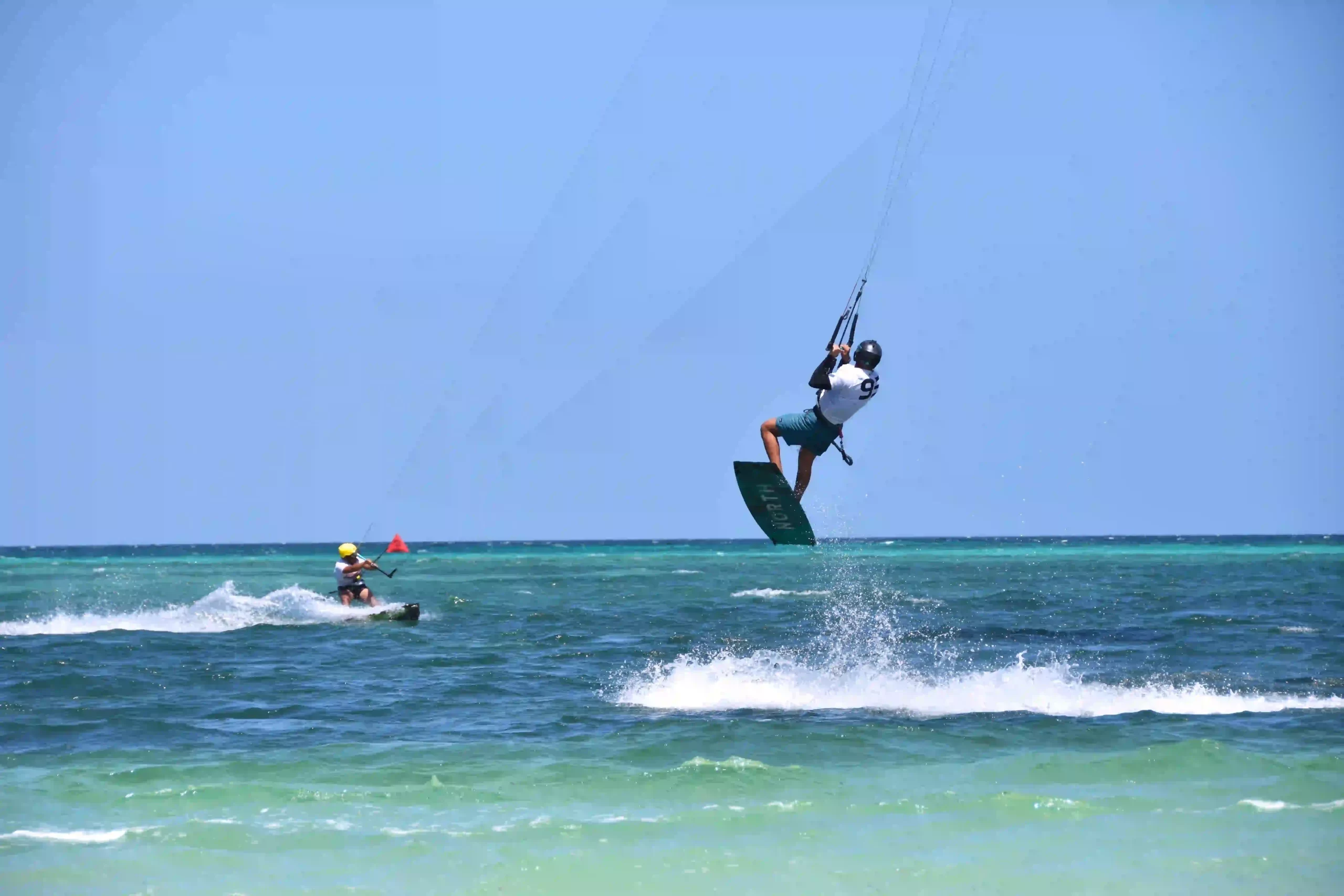
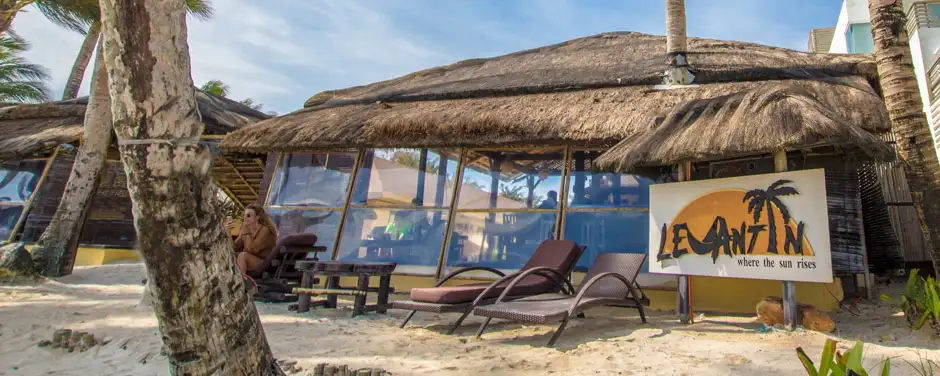

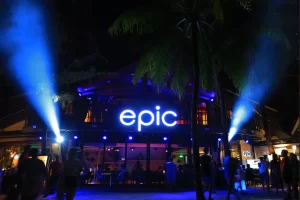

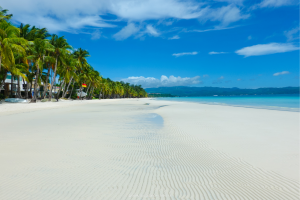
No Comments on Boracay Weather: An Insider’s Guide on the Best Time to Visit